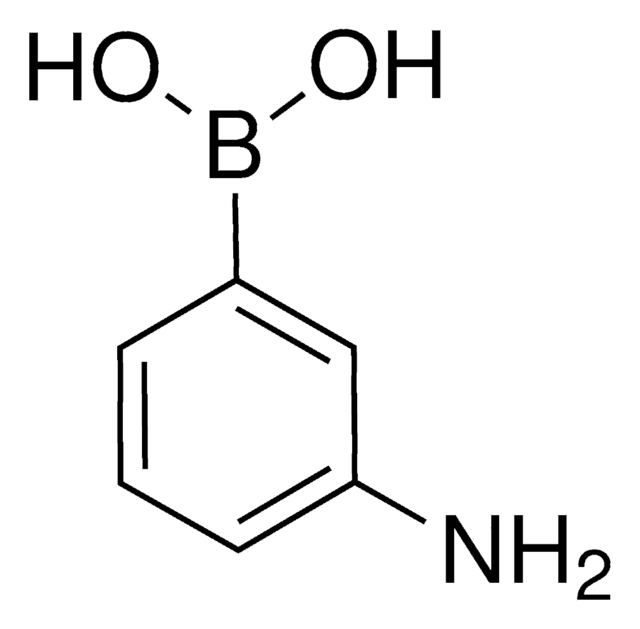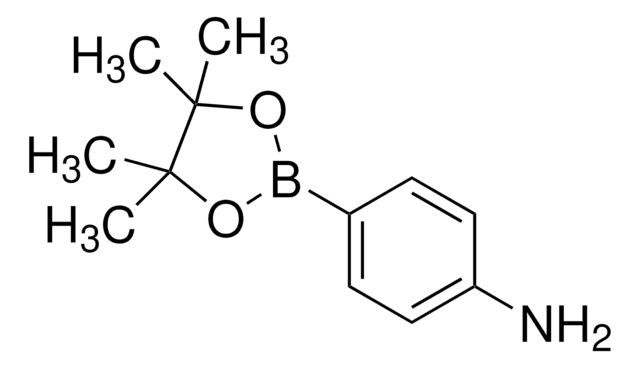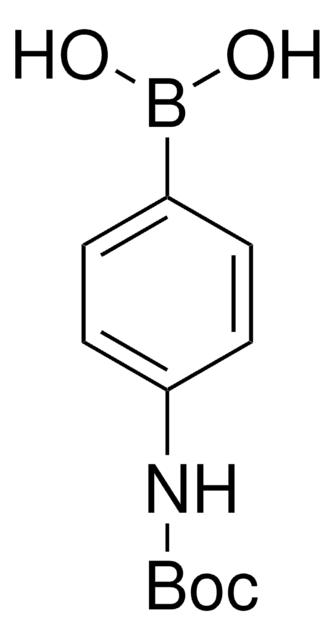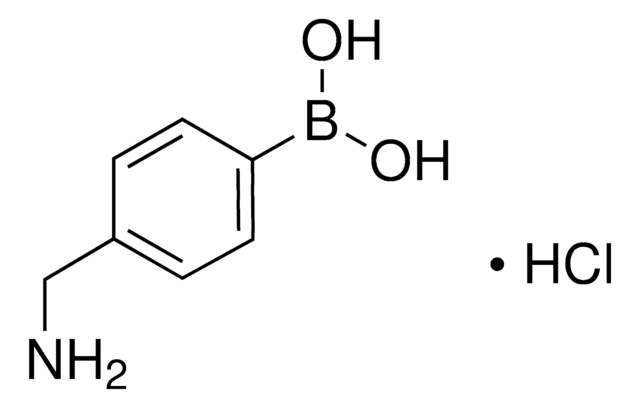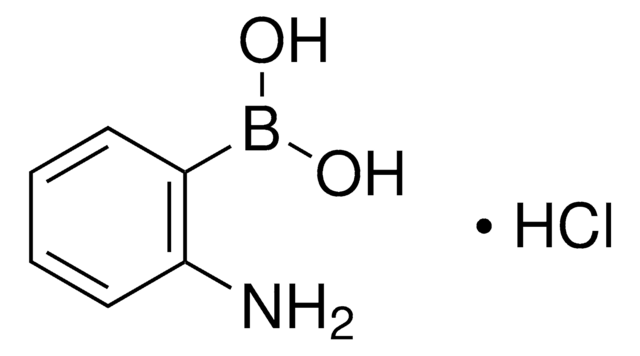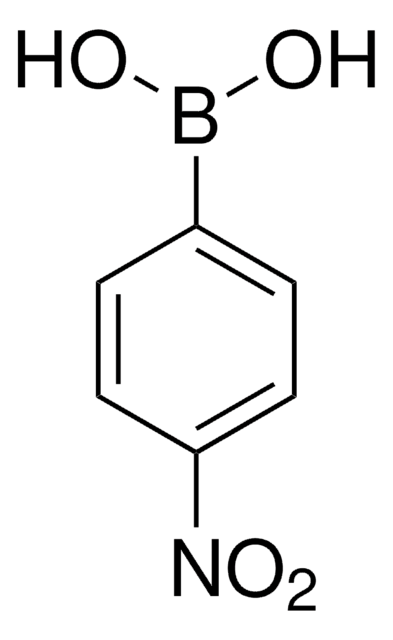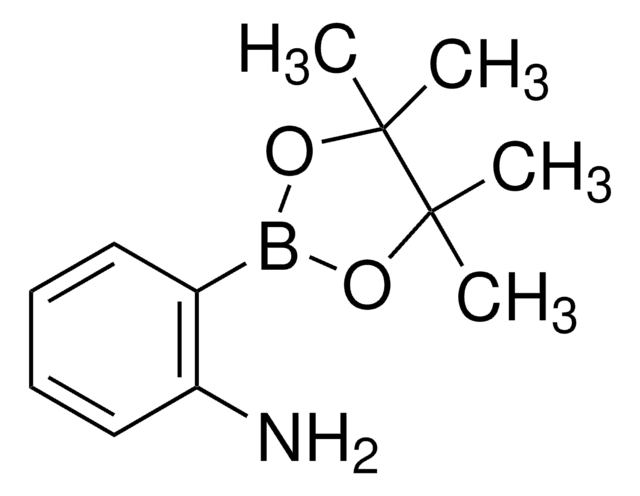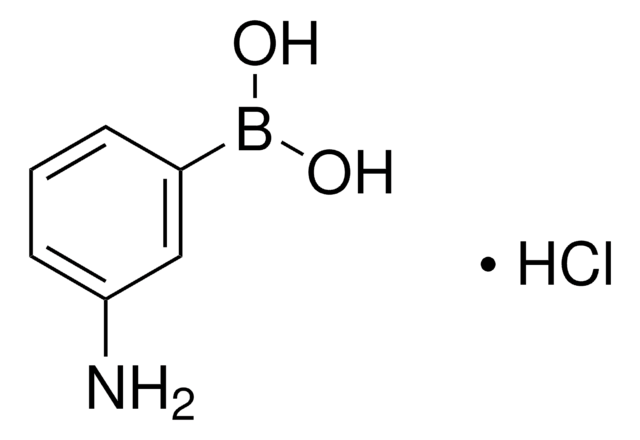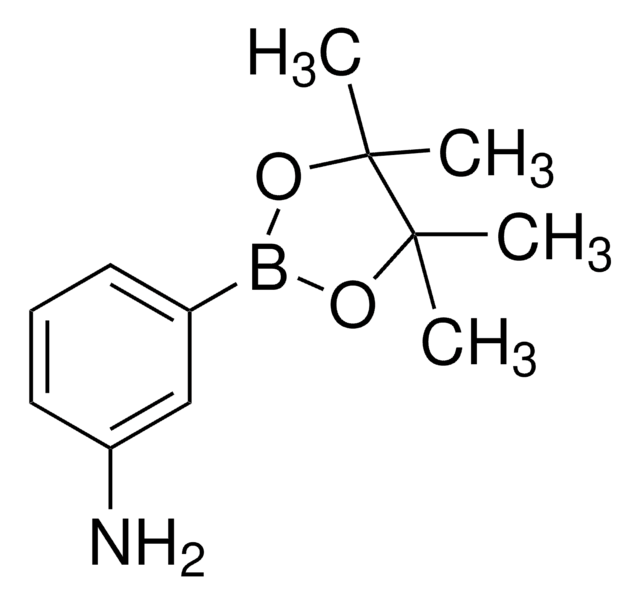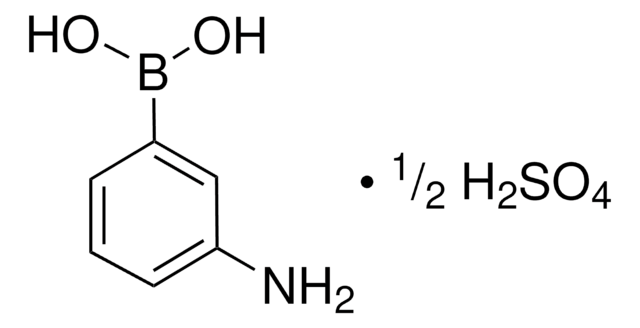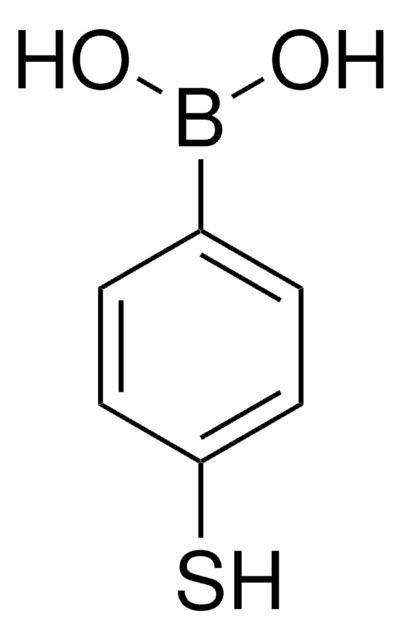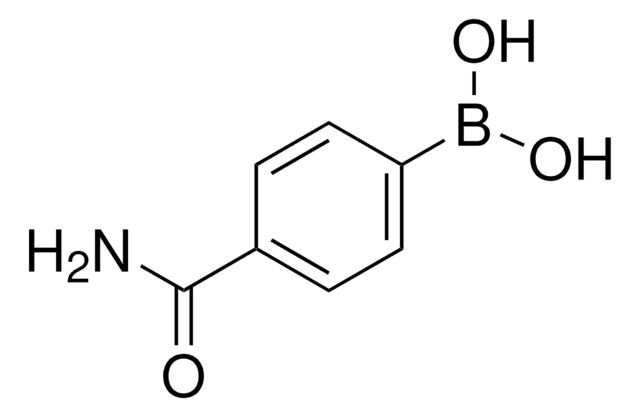708887
4-Aminophenylboronic acid hydrochloride
95%
Sinônimo(s):
4-Aminobenzeneboronic acid hydrochloride
Faça loginpara ver os preços organizacionais e de contrato
About This Item
Fórmula linear:
C6H8BNO2 · HCl
Número CAS:
Peso molecular:
173.41
Número MDL:
Código UNSPSC:
12352103
ID de substância PubChem:
NACRES:
NA.22
Produtos recomendados
Ensaio
95%
Formulário
powder
pf
195-200 °C
cadeia de caracteres SMILES
Cl.Nc1ccc(cc1)B(O)O
InChI
1S/C6H8BNO2.ClH/c8-6-3-1-5(2-4-6)7(9)10;/h1-4,9-10H,8H2;1H
chave InChI
QBYGJJSFMOVYOA-UHFFFAOYSA-N
Procurando produtos similares? Visita Guia de comparação de produtos
Descrição geral
May contain varying amounts of anhydride
Aplicação
4-Aminophenylboronic acid hydrochloride can be used to prepare:
- The modified reduced graphene composite material used as a sugar sensor to detect the analyte in fruit juice.
- The modified carbon electrode adsorbed with aminophenol, used for the detection of NADH and H2O2.
- The boron, nitrogen, and sulfur-doped carbon dot sensor, which in turn can be used for the detection of ascorbic acid.
Reactant for:
- Preparation of chromen-4-ones as DNA-dependent protein kinase inhibitors
Palavra indicadora
Warning
Frases de perigo
Classificações de perigo
Acute Tox. 4 Oral
Código de classe de armazenamento
11 - Combustible Solids
Classe de risco de água (WGK)
WGK 1
Ponto de fulgor (°F)
Not applicable
Ponto de fulgor (°C)
Not applicable
Equipamento de proteção individual
dust mask type N95 (US), Eyeshields, Gloves
Escolha uma das versões mais recentes:
Já possui este produto?
Encontre a documentação dos produtos que você adquiriu recentemente na biblioteca de documentos.
Os clientes também visualizaram
Murugan Thiruppathi et al.
Talanta, 200, 450-457 (2019-05-01)
Non enzymatic detection of NADH and H2O2 is of practical significance for both environmental and biological prospective. However, there is no simple, straight forward electrochemical sensor available for sensing of them in real samples. Addressing this challenge, we report a
Qi Wang et al.
Biosensors & bioelectronics, 50, 331-337 (2013-07-25)
A sensitive electrochemical active interface for sugar sensing based on the specific boronic acid-diol binding was established. The sensing matrix was formed by stirring a suspension of graphene oxide (GO) with 4-aminophenylboronic acid (APBA). The resulting composite consists of a
Sabrina Belbekhouche et al.
Colloids and surfaces. B, Biointerfaces, 177, 416-424 (2019-02-25)
Glucose-responsive multilayer capsules have been produced through the layer-by-layer deposition of biodegradable polymers based on hydrogen bonding. The used polymers are alginate derivative and polyvinylpyrolidone (PVPON). Concentration-dependent glucose responsiveness was reached through chemical modification of alginate, selected as polyanion, with
A dual-mode sensor for colorimetric and ?turn-on? fluorescent detection of ascorbic acid
Liu Y, et al.
Dyes and Pigments, 149, 491-497 (2018)
Sun Dal Kim et al.
Science advances, 4(10), eaau1956-eaau1956 (2018-11-07)
The key component currently missing for the next generation of transparent and flexible displays is a high-performance polymer material that is flexible, while showing optical and thermal properties of glass. It must be transparent to visible light and show a
Nossa equipe de cientistas tem experiência em todas as áreas de pesquisa, incluindo Life Sciences, ciência de materiais, síntese química, cromatografia, química analítica e muitas outras.
Entre em contato com a assistência técnica